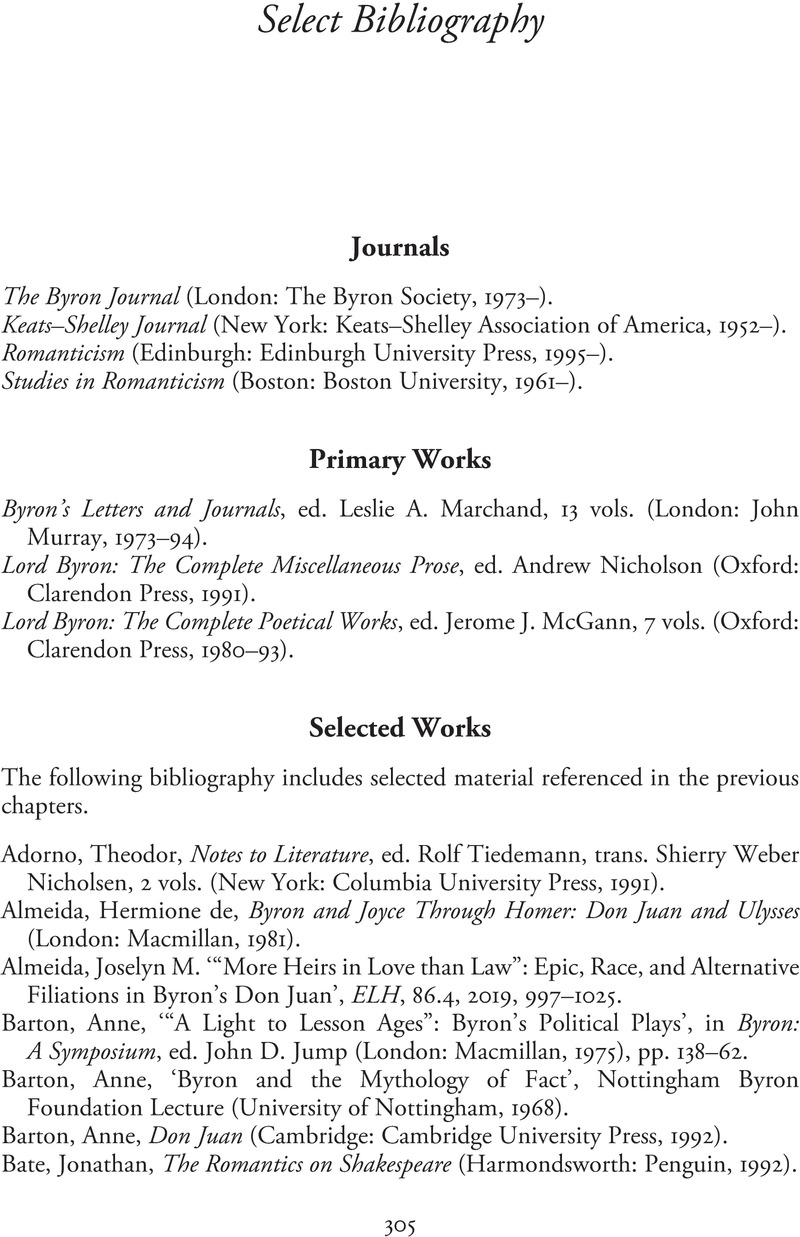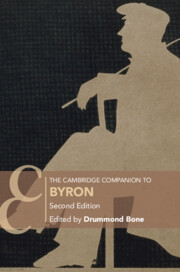Book contents
- The Cambridge Companion to Byron
- The Cambridge Companion to Byron
- Copyright page
- Contents
- Notes on Contributors
- Preface
- Chronology
- Abbreviations
- Chapter 1 Byron’s Life and His Biographers
- Chapter 2 ‘My Pen Is at the Bottom of a Page’
- Chapter 3 Byron’s Politics
- Chapter 4 Byron: Gender and Sexuality
- Chapter 5 Heroism and History
- Chapter 6 Byron and the Eastern Mediterranean
- Chapter 7 1816–1817: Childe HaroldIII and Manfred
- Chapter 8 Byron and the Theatre
- Chapter 9 Byron’s Experiments in Drama: 1820–1822
- Chapter 10 Childe Harold’s Pilgrimage iv, Don Juan, and Beppo
- Chapter 11 Redeeming Levity
- Chapter 12 The Vision of Judgment and the Visions of ‘Author’
- Chapter 13 Byron’s Bear and Other Animals
- Chapter 14 Byron’s Lyric Poetry
- Chapter 15 Byron and the Eighteenth Century
- Chapter 16 In Byron’s Wake
- Chapter 17 Byron, Postmodernism, and Intertextuality
- Chapter 18 ‘Writing Grows a Habit’
- Select Bibliography
- Index
- Cambridge Companions To Literature
- References
Select Bibliography
Published online by Cambridge University Press: 02 November 2023
- The Cambridge Companion to Byron
- The Cambridge Companion to Byron
- Copyright page
- Contents
- Notes on Contributors
- Preface
- Chronology
- Abbreviations
- Chapter 1 Byron’s Life and His Biographers
- Chapter 2 ‘My Pen Is at the Bottom of a Page’
- Chapter 3 Byron’s Politics
- Chapter 4 Byron: Gender and Sexuality
- Chapter 5 Heroism and History
- Chapter 6 Byron and the Eastern Mediterranean
- Chapter 7 1816–1817: Childe HaroldIII and Manfred
- Chapter 8 Byron and the Theatre
- Chapter 9 Byron’s Experiments in Drama: 1820–1822
- Chapter 10 Childe Harold’s Pilgrimage iv, Don Juan, and Beppo
- Chapter 11 Redeeming Levity
- Chapter 12 The Vision of Judgment and the Visions of ‘Author’
- Chapter 13 Byron’s Bear and Other Animals
- Chapter 14 Byron’s Lyric Poetry
- Chapter 15 Byron and the Eighteenth Century
- Chapter 16 In Byron’s Wake
- Chapter 17 Byron, Postmodernism, and Intertextuality
- Chapter 18 ‘Writing Grows a Habit’
- Select Bibliography
- Index
- Cambridge Companions To Literature
- References
Summary

- Type
- Chapter
- Information
- The Cambridge Companion to ByronSecond Edition, pp. 305 - 318Publisher: Cambridge University PressPrint publication year: 2023



